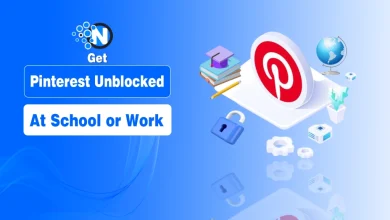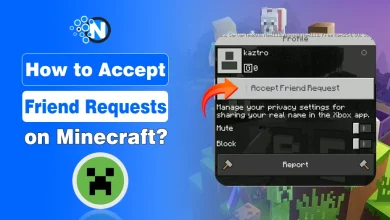How to Start a Blog and Make Money in 2025?
If you want to be a blogger in 2025 and are wondering how to start a blog, you have landed in the right place. A blog is an online appearance of your creative personal ideas or business things. Blogging is undoubtedly unique and now become the most prominent way of earning money.
Using your thoughts in solving others’ problems is relevant to blogging. It is always concerned with a specific niche, i.e., health, tech, and travel, which are some of its most widespread niches.
Below is a blogging guide about how to start a blog for beginners that I have followed when starting our Nogentech.org blog.
Let’s go through this guide on how to start blogging and make money in 2025!
What is a Blog?
A blog or weblog is a regularly updated website where useful information, news, or guides are shared by experts in the form of articles, journals, infographics, or videos.
Creation of Blogs has multiple functions like industry news, company updates, product information, etc, to give the users a large platform for knowledge.
A blog is the best place where experts share their views, insights and personal views about specific operations and their consequences. They can also be used as a source of income.
Why Should You Start a Blog?
Since blogging is all about sharing your knowledge and expertise with people around the globe with similar interests. A passion for a particular industry, niche, or topic is the primary requirement to become a successful blogger.
As per WebTribune, the total number of bloggers worldwide stands at 104 million, including 32 million in the US alone. And, 70% of marketers say blog posts are the most effective content type when used for demand generation. (Content Marketing Institute)

These interesting stats encourage beginners to get started with blogging for better outcomes.
When you are passionate about something specific, the process of starting a blog becomes easier. As long as you keep writing about things that interest you, your passion will shine through and keep your audience engaged and interested in reading your blog posts.
Reasons to Start Blogging Right Now
Blogging is the best way to express your thoughts or ideas and has the potential to open so many doors in this digital world. Whether you are a web developer, digital marketer, healthcare professional or an online entrepreneur, you can start a blog to share your skills and expertise with others.
For example, I have started the Nogentech blog to share my 15+ years digital marketing and SEO career journey and expertise with like-minded people and beginners.
There are a few reasons to start a blog right now:
- To inspire a particular group of people
- To Build a personal brand online
- To build a strong online presence for your business
- To organize Your thoughts and Learn new skills
- To make money online
This is the best place to start a blog for free in simple steps without feeling overwhelmed. This blogging guide will cover everything you need to start and promote your blog effectively. You should go through the following steps carefully to succeed in blogging.
Read More: Best Graphic Design Blogs You Should Read
How to Start a Blog for Beginners Step by Step
There are procedures that must be taken correctly while doing anything in the digital realm in order to achieve the intended outcomes. You can use an ally or search for the path on your own. These days, online blogging resources give you comprehensive details on, starting a blog guide.
1. Choose a Blog Name and Niche Wisely
Choosing an appropriate name is the first and foremost to open new blog. The blog name is also known as the URL of your blog and creates a first impression. It could be your name, your business name, or a combination of words you like the most. Choosing a blog niche is also important because it is a specific area of topics or subjects to write about.
Selecting the right niche determines your blog’s potential. Below are some great blog niche ideas you can consider in 2025:
| Niche | Why you Should Choose |
|---|---|
| AI & Tech | Continued boom in AI tools and innovations |
| Personal Finance | High demand for financial literacy and crypto insights |
| Sustainable Living | Eco-conscious trends and green products |
| Remote Work | Digital nomad lifestyles and productivity tools |
| Health & Wellness | Rising interest in mental health and holistic healing |
Some Niche Selection Tips Include:
- Reflect on your own story! What problems have you overcome and how can you explain those to your audience?
- Use tools like Google Trends and Reddit to determine audience interest to choose an evergreen niche.
- Don’t chase trends blindly; sustainable niches yield long-term results to keep your blog alive for longer.
There must be a sensible connection between blog niche and name to attract more online users and make them stay longer to read and share your content. You can also ask your friends or family for blog name suggestions. Further, try Namelix to find a good and relevant name for your new blog.
Once you have decided, you should check it to make sure that no one else is running a blog using the same name.

If your ideal blog name has already been registered by someone else, you can do different things like:
- Try the blog name with another domain extension, such as .org, .io, or .net.
- Add small words like ‘best’ or ‘the’ to make your favorite blog name available.
- Add dashes between words like nogen-tech.org instead of nogentech.org
You should choose a descriptive name for your blog to give your readers a quick idea of what your blog is all about. For instance, if you are about to starting a news blog about technology news and updates, you can use the words ‘tech’ or ‘technology’ in the name to let potential readers know that your blog contains useful tech news, updates, and stories.
2. Get Your Blog Online (Web Hosting)
After selecting and registering a blog name, now it’s time to set up web hosting for your blog because your blog needs to be on a reliable, fast, and secure server online. In the rushed era of cyber threats, it is best to opt out of a hosting platform that has strong security protocols like SSL certificates, 2FA, and a firewall system.
There are so many blogging tools and CMSs that help you set up and host a blog and WordPress is the most popular blogging and CMS solution around the globe.
Being a starter, I would recommend using Namecheap as its customized hosting plans are enough for your brand-new blog. However, our established blogs our team insists on the usage of Bluehost for a variety of reasons:
Our websites are hosted on Bluehost: to be very honest, most of our business and client websites are online with Bluehost web hosting. We recommend it because we use it personally.
Free domain name registration: When you sign up for any Bluehost plan, you will be allowed to register your domain name for free. This keeps your blogging overhead at a minimum so you can use the money elsewhere.
Affordable plans: Bluehost is a reliable hosting solution with affordable plans that start from $2.95/month. This helps new bloggers get started effectively without spending a lot of bucks on basics. Later on, one can upgrade the plan according to the growing number of visitors per month.

Money-back guarantee: All their plans come with a 30-day money-back guarantee, so you can get your money back if you are facing issues or have just changed your mind.
Automatic WordPress installation: When you use Bluehost to host your blog on WordPress, they offer free and automatic WP software installation to help you set it up conveniently.
24/7 customer support: they have an experienced team of customer support professionals to help users resolve their hosting-related issues in real time. They can be reached via phone or live chat 24 hours a day and 7 days a week.
Steps to Get Your Blog Online
Below are some simple steps related to how to start a blog on WordPress using Bluehost:
1. Click here to avail $2.95/month offer and hit the ‘Select’ button to proceed
2. Click the ‘Select’ button to choose and proceed with your favorite plan
3. Type your own blog name (domain name) or create a new domain name using the available boxes

4. Fill up your billing details on the registration page and check the boxes with additional features you want to add.

5. Once done, you will need to create a Bluehost account to get your blog online

6. On the home page of their website, you can see the ‘WordPress’ button to install WordPress blogging software automatically and log in to access the administrator area.

3. Design your blog with a free WordPress theme
Once you have all done with web hosting and WordPress installation, now your blog needs a visual appeal (layout and design). Installing a WordPress theme is the best way to choose an appropriate design for your blog even without having programming skills and coding knowledge.
This is a free, and straightforward way of increasing the visual appeal of your blog because there are 3000+ free WordPress in their library.

In WP administrative area, you can find the ‘Themes’ button under the ‘Appearance’ tab in the main menu. Then click on the WordPress.org Themes button on the top of the screen to search and install WordPress themes.

The overall feel and look of a blog rely on the theme you pick. Before you install one on your blog, read the theme description, check the theme demos and also check for user reviews. You should choose a simple, appealing, and mobile-responsive theme to entice readers and boost your SEO efforts.
If you spend some money on your blog, you should buy a premium theme as it comes with plenty of features and benefits that free themes cannot offer.
4. Install Necessary WordPress Plugins
WP plugins are apps used to add new features and functionality to your blog without writing codes.

Below are some expert picks of necessary WordPress plugins to help you add the functionality to your blog you need.
Note: You can also use competitive WordPress alternatives to start a blog and make money online.
1. Yoast SEO: An SEO plugin helps you optimize blog posts and pages easily. Yoast SEO plugin also enables you to optimize content for improved readability. Robots.txt which is crucial for site SEO and crawlability in the search is also developed and executed through Yoast SEO.
2. UpdraftPlus: One of the best WordPress backup plugins that help you create regular blog backups. UpdraftPlus also provides facilities like web migration and restore and backup services.
3. Sucuri Security: Sucuri is a free security scanner for WordPress blogs and websites. It keeps your blog protected from hackers and cyber threats.
4. WP Rocket: WP Rocket is a highly recommended plugin to improve the overall performance of your blog. The plugin speeds up your blog and provides basic stats so you can see how your blog is performing.
5. PushEngage: It is a plugin that helps you add push notifications to your blog to increase blog traffic and subscribers. You can send messages to users without getting their availability on your site with PushEngage.
6. HubSpot: When your blog needs more email subscribers, you should install the HubSpot plugin to create simple and appealing popups, calls to action, and scroll boxes.
7. Bonus tip: You can use SEO tools and follow SEO blogs to improve your site’s SEO practices. This tool crawls websites and performs a quality SEO analysis. This way, you can find and fix all the problems on your website that affect its ranking.
5. Write Your First Blog Post
Finally, your blog is up and ready to attract and entice readers. Now, you have your blog to turn your vision and passion into reality. In your first blog post, you can introduce yourself to your audience and let them know what you will share on the blog. In the main WordPress menu, you can see the ‘Posts’ tab and find the ‘Add new’ button to start creating a post.

You can type inside the WP editor or copy-paste your article written somewhere else, such as in MS Word or Google Docs. Before you hit the ‘Publish’ button, you should be confident about the SEO friendliness of your blog posts for search engines. Make sure to add keyword-rich Meta titles, descriptions, and tags into your posts to make them SEO friendly.
If you are not sure how to do it, you can install an SEO plugin like Yoast SEO or AIO SEO to optimize your content for search engines using focus keywords. When it comes to publishing content on your blog, you should to attract new readers and retain old readers.

Best blog post SEO tips include:
- Start each post with a strong hook or story
- Use high quality and relevant visuals, infographics, and formatting for readability
- Incorporate keywords naturally, don’t keyword-stuff
- Optimize your images for speed and mobile view
6. Promote your Blog to Get More Readers
Along with writing informational and high-quality content consistently, you should promote your blog to get more eyeballs on your content. There are several ways to promote and market your blog:
- Adding your blog URL to your email signature
- Sharing blog posts across social media profiles
- Blog commenting on relevant authority blogs
- Guest blogging on popular blogs in the industry via blogger outreach
In Guest blogging, multiple things cause issues while you are performing it without considering primary measures. For that, you should be aware of some common blogging mistakes.
Optimizing your blog posts for mobile uses and improving page load speed are the other factors that help you increase the visibility of your blog in search results.
7. Make Money from Your Blog
When you start getting massive visitors to your blog, you can turn your blog into an earning machine. There are several ways you can make money with blogging and some of them are listed below:
1. Monetization with Ads networks: Content monetization using advertising services like Google Adsense is a popular way of making blogging money. To land success:
- Start with Google AdSense or Ezoic
- Focus on increasing page views with SEO and social sharing
- Higher traffic = higher RPM (revenue per 1000 views
2. Affiliate marketing: You can insert relevant affiliate links in your blog posts to get commission upon sales through your blog.
- Sign up for affiliate networks like Amazon and eBay
- Create review roundups or tutorials around products
- Use tracking tools to monitor conversions
3. Selling products or services online: Selling products or services through blog is another best way to make money online.
- eBooks, printable planners, niche-specific courses
- Use Canva to create products, Gumroad or Payhip to sell them
- Offer lead magnets to convert visitors into customers
4. Sponsored content: Publishing sponsored posts on your blog to promote relevant products or services on your blog is another great way to make lots of bucks every month.
- Outreach to brands or list your site on platforms like Intellifluence
- Always disclose sponsorship to maintain trust
- Aim for niche relevancy, not just payouts
Read More: The 10 Best Business Blogs to Follow
Bonus Tips for Success
Once you are on your way, you should follow some tips for ultimate and long-lasting blogging success like:
- Stay Updated: Blogging tools and algorithms are constantly evolving, keep learning!
- Build Authority: Guest post, get featured in media, network with other bloggers
- Mental Game: Consistency beats perfection. Treat your blog like a business and keep up the good work
- Create Pillar Content: Create foundational posts that showcase your expertise
- Repurpose Content: Repurpose old content to update it with the latest information and details. You can also turn blog posts into videos, podcasts, or carousels to boost engagement
Final Words
Blogging is the best way to build brand awareness, become an expert in your industry, drive your target audience, and boost conversions. I hope this comprehensive starting a blog in 2025 guide has answered all your questions on how and where to start a blog.
If you are unclear about any of the steps mentioned above, or wondering how to start a blog with no experience, don’t worry! Contact Nogentech experts for assistance or hire us to create a blog for your business or personal brand.





